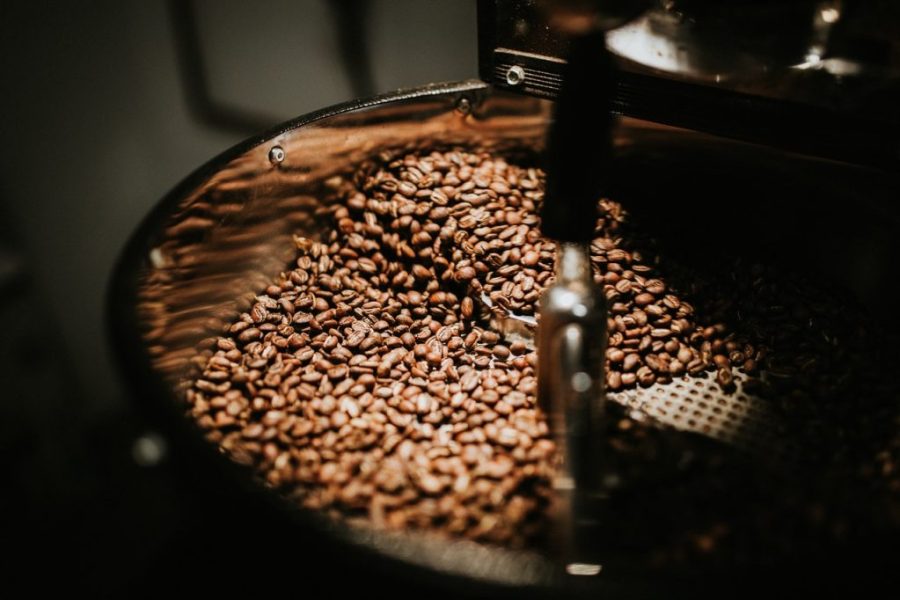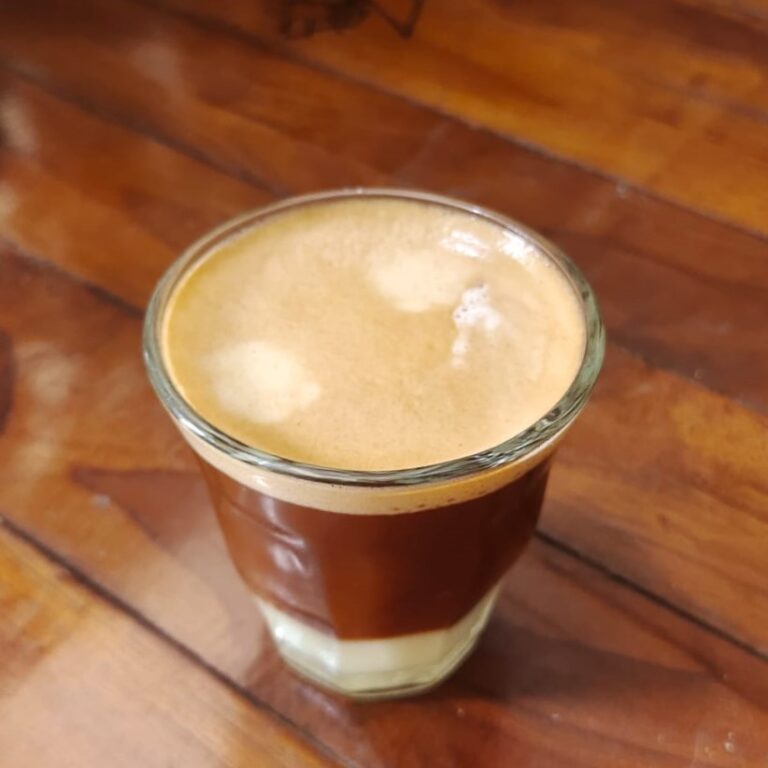Indonesian coffee is renowned worldwide for its unique flavors, bold profiles, and complex characteristics. With a rich history of coffee cultivation dating back to the Dutch colonial era, Indonesia has become a coffee lover’s paradise. One of the key factors that make Indonesian coffee exceptional is the art of roasting. In this comprehensive guide, we will explore the correct way to roast Indonesian coffee, from selecting the beans to the final brew. By mastering this process, you can unlock the full potential of these incredible beans. Here’s how to mastering the art of roasting Indonesian Coffee: A comprehensive guide:
Choosing the Right Indonesian Coffee Beans
Selecting the right Indonesian coffee beans is the crucial first step on your journey to roasting and brewing the perfect cup of coffee. Indonesia is home to a wide variety of coffee regions, each known for its unique flavors and characteristics. Here’s an in-depth exploration of the factors to consider when choosing the right Indonesian coffee beans:
1. Understand the Coffee Regions: Indonesia boasts several distinct coffee-producing regions, each offering its own unique characteristics. To choose the right beans, it’s essential to understand these regions and what they bring to the table:
- Sumatra: Sumatran coffee, grown primarily in regions like Aceh and Mandheling, is renowned for its full-bodied, earthy, and sometimes spicy flavors. These beans often have low acidity, making them perfect for dark roasts.
- Java: Java, one of the earliest coffee-producing regions in Indonesia, offers beans with medium body and acidity, accompanied by rich, herbal notes. These beans are versatile and work well for a range of roasting profiles.
- Bali: Coffee from Bali is often bright and fruity, with hints of citrus and tropical flavors. They are well-suited for light to medium roasts, allowing the unique regional characteristics to shine through.
- Sulawesi: Grown in the Toraja region, Sulawesi coffee beans are celebrated for their distinct flavors, often featuring a combination of spice, earthiness, and hints of fruit. Medium roasts are common for Sulawesi coffee.
2. Consider Roast Level Preferences: Your roast level preference is a critical factor in selecting the right Indonesian coffee beans. Different beans and regions can excel at various roast levels. Here’s a general guideline:
- If you prefer light roasts, look for beans from regions like Bali or Sulawesi. These beans tend to have bright and delicate flavors that are best highlighted with a light roast.
- For those who enjoy medium roasts, Java coffee is a great choice. It strikes a balance between body and acidity, making it suitable for a medium roast.
- If you’re into dark roasts, Sumatra coffee is a top pick. The beans’ earthy and spicy notes complement a dark roast profile beautifully.
- Know the Coffee Varietals: Within each region, there are various coffee varietals and cultivars. These can impact the flavor, aroma, and even the growing conditions of the coffee beans. Familiarize yourself with the different varietals in each region to get a better idea of what to expect from your coffee. For instance, you might come across varietals like Typica, S-795, and Catimor in these regions, each contributing unique qualities to the coffee.
- Consider Processing Methods: The way coffee beans are processed can significantly influence their flavor. In Indonesia, you’ll often encounter two primary processing methods:
- Wet Processing: This method involves depulping the coffee cherries and fermenting the beans before drying. It tends to result in cleaner, brighter flavors and is common in regions like Bali.
- Natural Processing: In this method, the coffee cherries are dried with the beans inside. This imparts a natural sweetness and often a fuller body to the coffee. Sumatran coffee, for instance, is often processed using the “Giling Basah” method, a variation of natural processing.
- Consider the Elevation: The elevation at which coffee is grown can affect its flavor profile. Typically, higher elevations produce beans with greater complexity and acidity. When choosing Indonesian coffee beans, it’s a good idea to inquire about the altitude at which they were grown. For instance, Sumatra Mandheling coffee is often grown at high altitudes, contributing to its unique characteristics.
- Buy from Reputable Sources: To ensure the quality and authenticity of the coffee beans, it’s essential to buy from reputable sources. Look for trusted coffee suppliers, local cooperatives, or direct trade relationships with Indonesian coffee producers. Reliable sources will often provide detailed information about the beans, including their origin, processing method, and flavor notes.
- Experiment and Trust Your Palate: Ultimately, the best way to find the perfect Indonesian coffee beans for your taste is through experimentation. Try different beans from various regions, roast levels, and processing methods. Keep detailed tasting notes to track your preferences. Trust your palate and enjoy the journey of discovering the diverse world of Indonesian coffee.
In conclusion, choosing the right Indonesian coffee beans involves understanding the regions, roast levels, varietals, processing methods, and elevation factors. It’s a fascinating exploration of the rich and diverse coffee culture in Indonesia. By considering these factors and experimenting with different options, you’ll be well on your way to brewing the perfect cup of Indonesian coffee tailored to your unique preferences.
Roasting Indonesian Coffee: Gathering Your Roasting Equipment
To roast Indonesian coffee properly, you’ll need the right equipment. A few key items include:
a. Coffee Roaster: You can choose between various roasting methods, such as a drum roaster, fluid-bed roaster, or even a stovetop popcorn popper. Each method has its unique advantages, so pick the one that suits your needs and budget.
b. Green Coffee Beans: Ensure you have high-quality, green Indonesian coffee beans. These beans are unroasted and ready for your customized roast.
c. Scales: Accurate weighing of coffee beans and monitoring the roast process is essential. Use a digital scale to measure the precise amount of beans for each roast.
d. Ventilation: Proper ventilation is crucial to remove smoke and chaff produced during roasting. Ensure your roasting area has adequate ventilation.
Roasting Indonesian Coffee: Roasting Process
Now, let’s dive into the roasting process itself, step by step:
a. Preheat Your Roaster: Start by preheating your roaster to the appropriate temperature. The ideal temperature depends on the roast profile you’re aiming for. Light roasts usually start at around 350°F (175°C), while dark roasts may require temperatures of 450°F (230°C) or higher.
b. Load the Beans: Carefully load the green coffee beans into the preheated roaster. Ensure you don’t overcrowd the roasting chamber, as it can impede the even roasting of the beans.
c. Monitor the Roast: During the roasting process, you’ll need to monitor the temperature, time, and color changes of the beans. You can use an external thermometer and your roaster’s built-in temperature gauge for this purpose. Roasting profiles differ, but generally follow these stages:
- Drying Phase: The beans will start to lose moisture and turn from green to yellow. This stage usually lasts 3-5 minutes.
- First Crack: You’ll hear a cracking sound, which is the beans expanding and breaking. This marks the beginning of the development stage, and the beans will become paler to medium brown.
- Development Stage: The beans will darken further and release more aromatic compounds. You can decide when to stop the roast based on your desired roast level.
- Second Crack (Optional): Some coffee enthusiasts prefer to roast until the second crack, which leads to a darker roast. At this stage, the beans become very oily, and the flavor profile changes.
d. Cooling the Beans: Once you achieve your desired roast level, it’s crucial to cool the beans rapidly to stop the roasting process. You can do this by transferring the beans to a cooling tray, using a fan, or simply letting them sit at room temperature.
Post-Roasting Considerations
Post-roasting considerations play a crucial role in ensuring that the coffee you’ve roasted to perfection maintains its quality and delivers a delightful cup of coffee. These steps, which include resting, storing, and grinding the coffee, are essential to preserving the flavors and aromas that you’ve carefully developed during the roasting process. Let’s explore these post-roasting considerations in more detail:
1. Resting Period: After the coffee beans have been roasted, it’s vital to allow them to undergo a resting period. During roasting, the beans undergo significant chemical changes, including the release of carbon dioxide. Allowing the beans to rest for a period of time, typically 12 to 24 hours, helps several things:
- Carbon Dioxide Release: The resting period allows excess carbon dioxide, which was generated during the roasting process, to dissipate. If you were to brew the coffee immediately after roasting, the excess carbon dioxide could negatively impact the flavor, creating a somewhat “sour” taste.
- Flavor Stabilization: During the resting period, the flavors within the coffee beans stabilize. This leads to a more balanced and consistent flavor profile when brewed.
- Freshness Preservation: While it may seem counterintuitive, resting the beans actually helps to preserve their freshness. By giving the beans time to degas and stabilize, they can better retain their flavors when eventually brewed.
2. Proper Storage: The way you store your freshly roasted coffee beans is another critical post-roasting consideration. Coffee is highly susceptible to moisture, air, light, and odors, which can all negatively impact its flavor. Here’s how to ensure proper storage:
- Airtight Container: Store the beans in an airtight container. This container should have a one-way valve to allow the release of any remaining carbon dioxide while preventing air from entering. Resealable bags with one-way valves are also a good option.
- Cool and Dark Location: Keep the container in a cool, dark place. Exposure to heat and direct sunlight can lead to flavor degradation. Room temperature or slightly cooler is ideal.
- Avoid Moisture: Moisture is a coffee bean’s enemy. Don’t store coffee near the sink, dishwasher, or anywhere that moisture can seep in. Keep the storage area dry.
- No Fridge or Freezer: Contrary to popular belief, it’s best to avoid storing coffee beans in the refrigerator or freezer. These environments can introduce moisture and odors, affecting the coffee’s taste.
3. Grinding Freshness: To fully appreciate the flavors of your freshly roasting coffee Indonesia, it’s important to grind the beans just before brewing. Coffee begins to lose its freshness shortly after grinding due to the rapid exposure of its surface area to air. Here are some grinding considerations:
- Use a Burr Grinder: Invest in a burr grinder if possible. Burr grinders provide consistent particle size, which is essential for an even extraction and balanced flavor in your cup.
- Adjust Grind Size: Depending on your brewing method, you’ll need to adjust the grind size. Different methods, such as espresso, pour-over, or French press, require distinct grind sizes to extract the best flavors.
- Brew Immediately After Grinding: To maximize the flavor, brew your coffee immediately after grinding. This ensures that the coffee is as fresh as possible and that it retains all the aromas developed during the roasting process.
In summary, post-roasting considerations are a crucial part of the coffee journey, impacting the flavor, aroma, and overall quality of your brew. Allowing the coffee beans to rest, storing them properly in airtight containers, and grinding them just before brewing all contribute to the preservation of freshness and the enjoyment of a truly exceptional cup of coffee. By paying attention to these details, you can ensure that your hard work in roasting Indonesian coffee is fully realized in every sip.
Brewing Your Perfect Cup
Now that you’ve mastered the art of roasting Indonesian coffee, it’s time to brew the perfect cup. Here are a few popular brewing methods:
a. French Press: Ideal for those who appreciate the full-bodied flavor of Indonesian coffee. Use coarse grounds and steep for about 4 minutes.
b. Pour-Over: Offers more control over the brewing process. Use medium-fine grounds and a slow, steady pour.
c. Espresso: Indonesian coffee can be used to make a rich and bold espresso. Grind the beans finely, and ensure a proper extraction time.
d. Cold Brew: A great option for those who prefer a refreshing, less acidic coffee. Coarse grounds are steeped in cold water for 12-24 hours.
Roasting Indonesian Coffee: Experiment and Enjoy
Experimentation and enjoyment are the final and arguably the most exciting steps in your journey of roasting and brewing Indonesian coffee. These stages allow you to explore the full spectrum of flavors, aromas, and brewing techniques, enhancing your coffee experience. Here’s a comprehensive expansion on the importance of experimentation and enjoyment:
1. Flavor Exploration:
- Variety of Beans: Indonesian coffee offers a wide range of flavors depending on the region and specific varietals. Experiment with different beans to uncover unique tasting notes, whether it’s the earthy richness of Sumatra, the fruity brightness of Bali, or the herbal complexity of Java.
- Roast Levels: Roasting at different levels, from light to dark, can dramatically alter the flavor profile of your coffee. Light roasts tend to preserve more of the coffee’s inherent characteristics, while dark roasts may introduce smokiness and bitterness. Try various roast levels to find your personal preference.
- Processing Methods: Consider experimenting with beans that have undergone different processing methods. For instance, compare the clean and bright flavors of wet-processed coffee with the sweetness of naturally-processed beans. Each method brings unique qualities to the cup.
2. Brewing Techniques:
- Brewing Methods: Try a variety of brewing methods to uncover how they affect the taste and body of your coffee. Popular choices include French press, pour-over, espresso, Aeropress, and cold brew. Each method extracts flavors differently and may accentuate specific characteristics of the coffee.
- Grind Size and Consistency: Adjusting the grind size and ensuring consistency is key to controlling extraction. Different brewing methods require specific grind sizes, from fine for espresso to coarse for French press. Experiment with grind settings to optimize your brew.
- Brew Time and Ratios: Experiment with brew times and coffee-to-water ratios. Shortening or lengthening brewing times and altering the amount of coffee used can profoundly impact the strength and flavor of your brew.
3. Keep Detailed Notes:
- Maintaining a coffee journal is a valuable practice. Record your brewing parameters, including roast level, grind size, water temperature, brew time, and the specific beans you’re using. Note the aromas, flavors, and any adjustments you make. This record helps you replicate successful brews and fine-tune your process.
4. Engage with the Coffee Community:
- The coffee community, both online and offline, is a valuable resource for learning and sharing experiences. Participate in forums, attend coffee tastings, and engage with fellow coffee enthusiasts. They can provide insights, recommendations, and even green coffee sources for further experimentation.
5. Trust Your Palate:
- Your personal taste is your ultimate guide. While there are recommended methods and general guidelines, your preferences are unique. Don’t be afraid to trust your palate and make adjustments based on what you enjoy most.
6. Pair Coffee with Food:
- Experiment with coffee pairings. Different coffees complement various foods and desserts. For example, a fruity Balinese coffee may go well with a citrusy dessert, while a rich Sumatran coffee might be an excellent match for chocolate.
7. Consistency is Key:
- While experimenting is fun, it’s also important to achieve consistency in your brewing process once you’ve found your preferred profile. This consistency will ensure that you can reliably produce great cups of coffee.
8. Savor the Journey:
- Enjoy the entire process, from selecting beans to roasting and brewing. Coffee is a complex and fascinating world. Relish every step, and remember that the journey is as rewarding as the destination.
In conclusion, experimentation and enjoyment are the heart and soul of your coffee journey. The process of discovering unique flavors, trying different brewing methods, and sharing your passion with the coffee community is an ongoing adventure. Keep detailed notes, trust your palate, and most importantly, savor the journey. Every cup of coffee you brew is a testament to your dedication to the art of coffee and the rich world of Indonesian coffee, waiting to be explored.
Conclusion
Mastering the art of roasting Indonesian coffee is a rewarding journey that allows you to unlock the full potential of these exceptional beans. By selecting the right beans, understanding the roasting process, and experimenting with different methods, you can savor the rich, complex flavors that Indonesian coffee is known for. Whether you prefer a light, medium, or dark roast, the key is to enjoy the process and the results of your labor – a delicious cup of Indonesian coffee.




